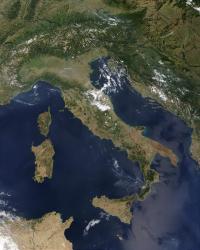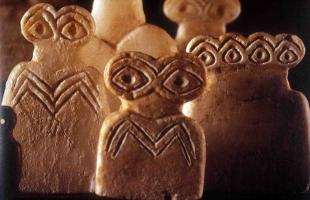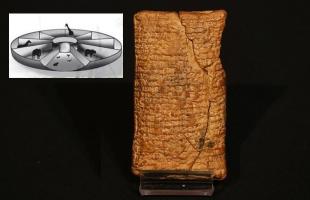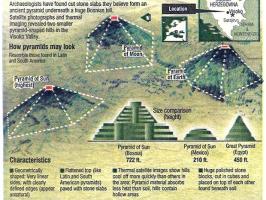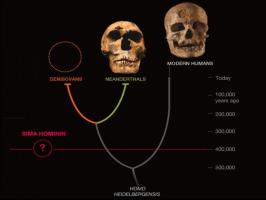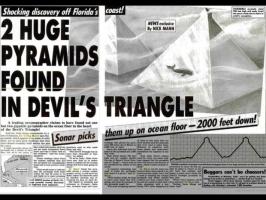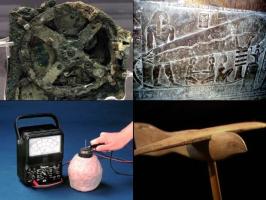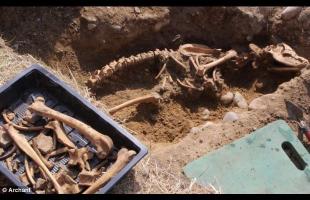Copy Link
Add to Bookmark
Report
dictyNews Volume 04 Number 13

CSM News
Electronic Edition
Volume 4, number 13
April 7, 1995
Please submit abstracts of your papers as soon as they have been
accepted for publication by sending them to CSM-News@worms.cmsbio.nwu.edu.
Back issues of CSM-News, the CSM Reference database and other useful
information is available by anonymous ftp from worms.cmsbio.nwu.edu
[165.124.233.50], via Gopher at the same address, or by World Wide Web
at the URL "http://worms.cmsbio.nwu.edu/dicty.html"
===========
Abstracts
===========
A novel type of unorthodox mitosis in amoebae of the cellular slime
mold (mycetozoan) Acrasis rosea.
Urs-Peter Roos and Bruno Guhl, Institut fur Pflanzenbiologie, Universitat
Zurich, Zurich, Switzerland.
Eur. J. Protozool, in press
SUMMARY
We investigated mitosis in trophic amoebae of Acrasis rosea (Olive
and Stoianovitch) by video microscopy of live cells, by
immunofluorescence with an antibody against tubulin, and by
transmission electron microscopy. As interphase cells contain neither
microtubules (MTs) nor microtubule- organizing centers (MTOCs) the
mitotic spindle forms entirely de novo from presumptive diffuse
intranuclear MTOCs. Mitosis is entirely closed and devoid of any
visible pole organelles during all its stages. The spindle axis is
probably established by parallel alignment of MTs due to spatial
constraints or lateral interaction. Chromosomes condense only when
spindle formation is well advanced; their kinetochores presumably
acquire MTs (kMTs) by capture. The two main elements of the nucleolus,
viz. granular body and dense granules, disperse, but do not
disintegrate. They later arrange in the center of the spindle along
its axis and eventually segregate as two granular bodies and two
groups of granules. Reconstruction of the nucleolus during telophase
involves the compaction of the granular bodies and co-aggregation of
the dense granules. At metaphase the chromosomes are aligned at the
equator of a spindle that tapers towards the blunt spindle poles.
Chromosomes are small, but they have distinct layered kinetochores
with two MTs each that terminate in their outer layer. Cytokinesis is
accomplished ca. eight minutes after the first signs of prophase.
Chromosome segregation during anaphase is effectuated almost solely by
spindle elongation, which begins when chromosomes are still undivided
and aligned at the equator. The velocity of spindle elongation and
chromosome segregation was 6 um/min. Chromosome congression and
segregation are most likely driven by interactions, static or dynamic,
between kMTs and non-kinetochore MTs (nkMTs), whereas the mechanism of
spindle elongation is probably based on movements between staggeredly
overlapping nkMTs. At the end of telophase the closure of the nuclear
envelope around the daughter nuclei pinches off a membrane tube
containing remnant nkMTs. Mitosis in A. rosea differs markedly from
that in other cellular slime molds and has much in common with that in
several protozoa.
----------------------------------------------------------------------------
Serpentine cAMP receptors may act through a G-protein-independent
pathway to induce post-aggregative development in Dictyostelium
Gavin R. Schnitzler, Celia Briscoe, Jason M. Brown, and Richard A.
Firtel
Cell, in press.
Summary
The transcription factor GBF is required for the developmental
switch between aggregation and post-aggregative gene expression,
cell-type differentiation, and morphogenesis (Schnitzler et al.,
1994). We show that constitutive expression of GBF allows ectopic
expression of post-aggregative genes, but only in response to
exogenous cAMP. GBF activation requires the serpentine cAMP receptors
required for aggregation but not the coupled Ga2 or only known Gb
subunit, suggesting a novel signaling pathway. In response to high
cAMP, ga2 null cells can bypass the aggregation stage, expressing
cell-type-specific genes and forming fruiting bodies. Our results
demonstrate that the same receptors regupost-aggregative aggregation
and cell-type differentiation but via distinct pathways depending upon
whether the receptor perceives a pulsatile or sustained signal.
---------------------------------------------------------------------------
Three-dimensional scroll waves of cAMP could direct cell movement and
gene expression in Dictyostelium slugs
Till Bretschneider, Florian Siegert, and Cornelis J. Weijer
Zoologisches Institut, Ludwig-Maximilians Universitaet Muenchen,
Luisenstr. 14, 80333 Muenchen, Germany
PNAS, in press.
ABSTRACT
Complex three dimensional waves of excitation can explain the
observed cell movement pattern in Dictyostelium slugs. Here we show
that these three- dimen- sional waves can be produced by a realistic
model for the cAMP relay system (Martiel, J.L. & Goldbeter, A. (1987)
Biophys J.52, 807-828). The conversion of scroll waves in the prestalk
zone of the slug into planar wave fronts in the prespore zone can
result from a smaller fraction of relaying cells in the prespore zone.
Further, we show that the cAMP concentrations to which cells in a slug
are exposed over time display a simple pattern, despite the complex
spatial geometry of the waves. This cAMP distribution agrees well with
observed patterns of cAMP regulated cell type specific gene
expression. The core of the spiral, which is a region of low cAMP
concentration, might direct expression of stalk specific genes during
culmination.
-----------------------------------------------------------------------








